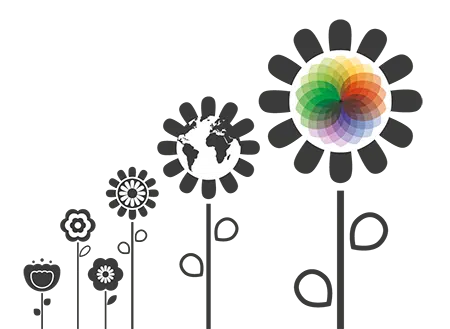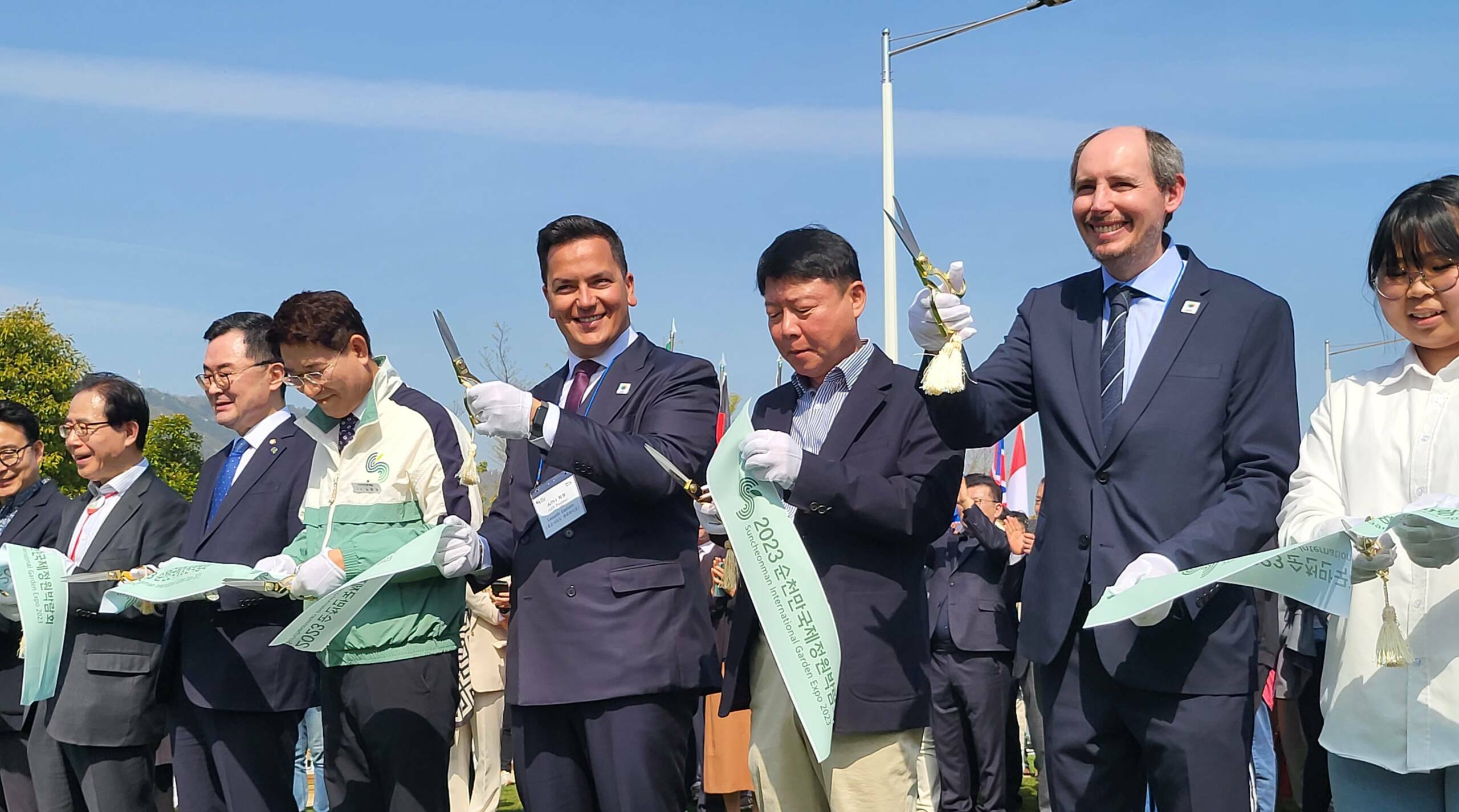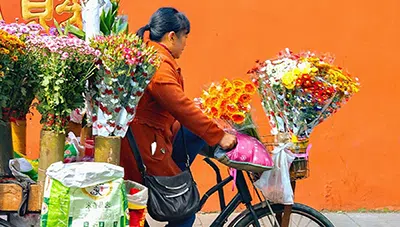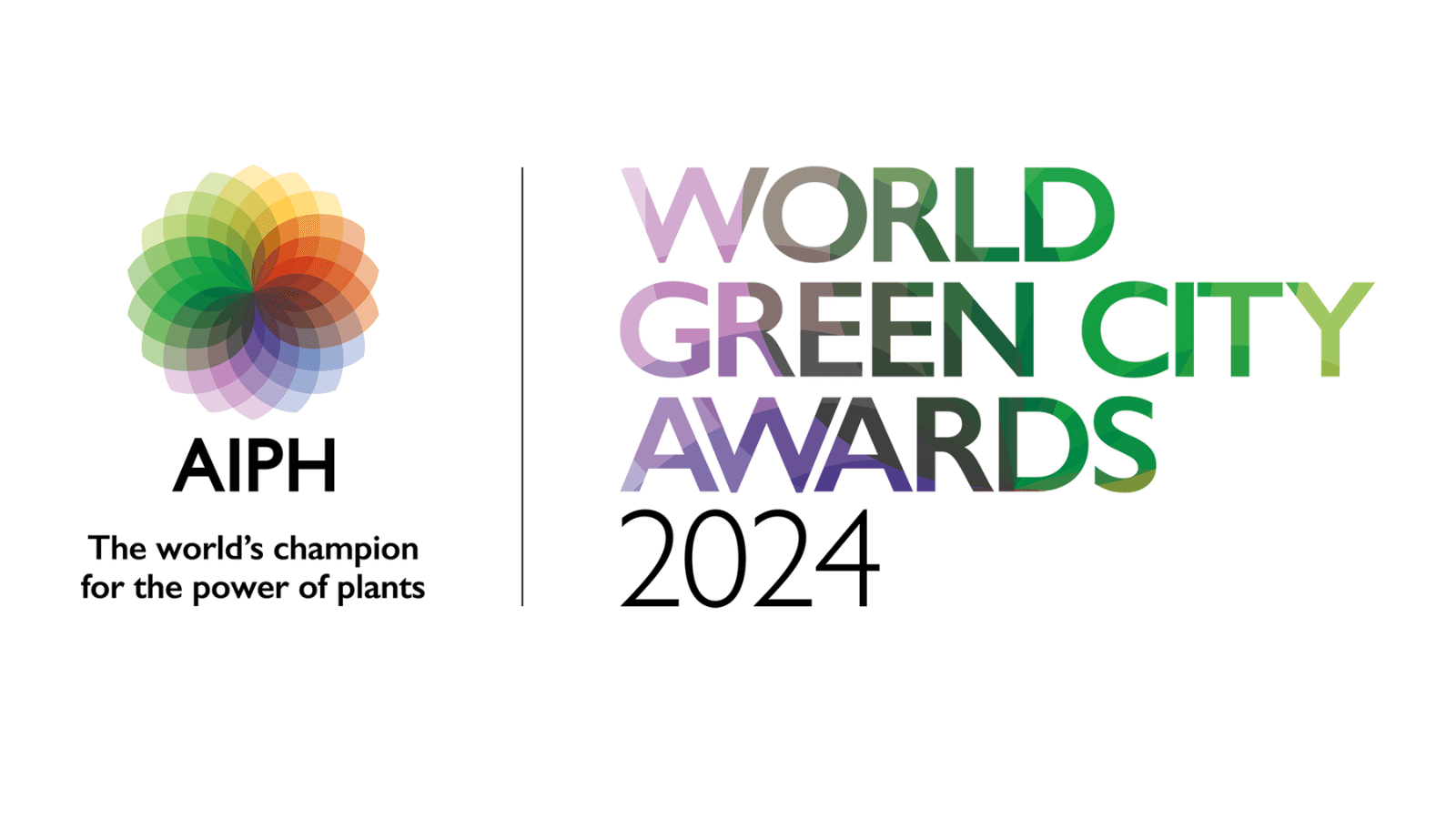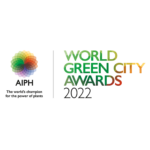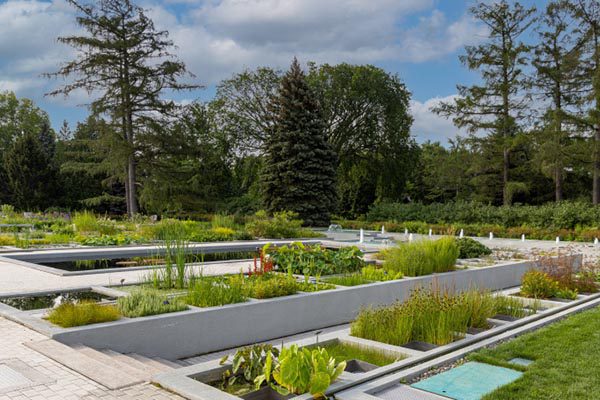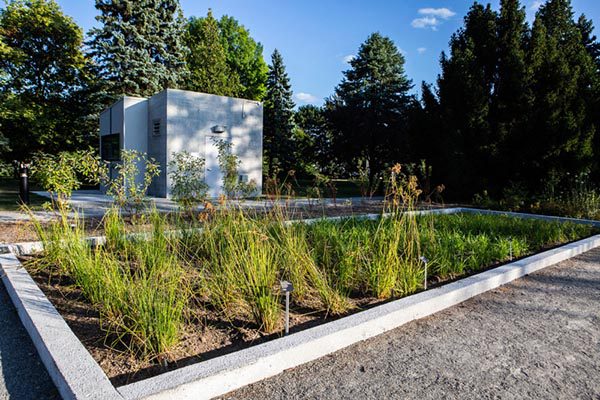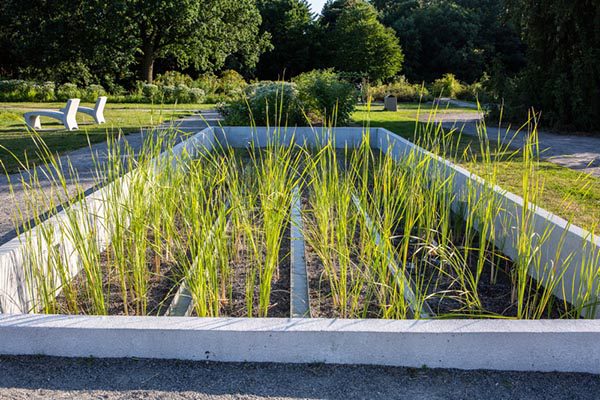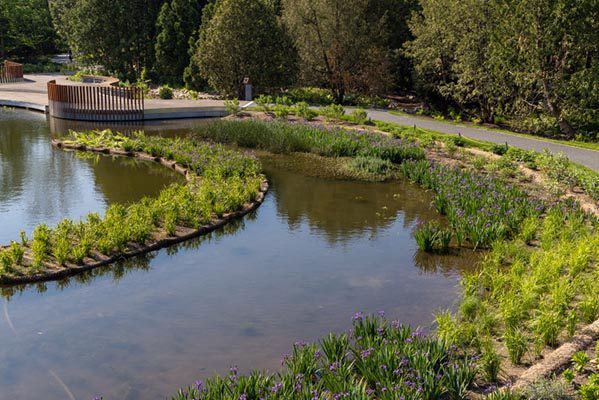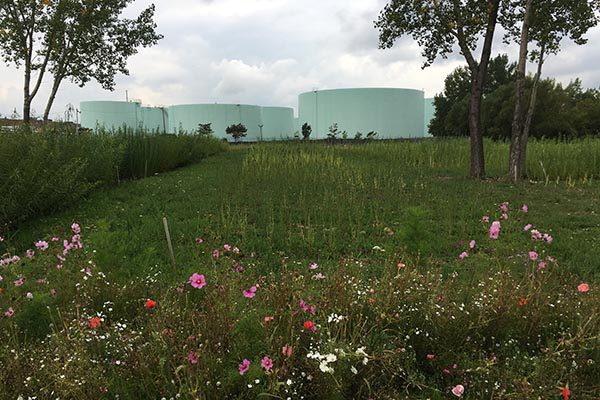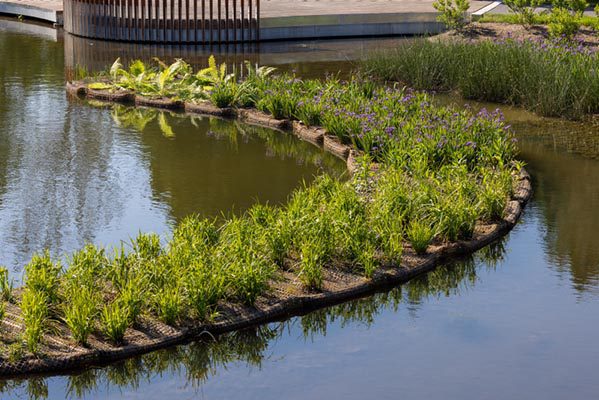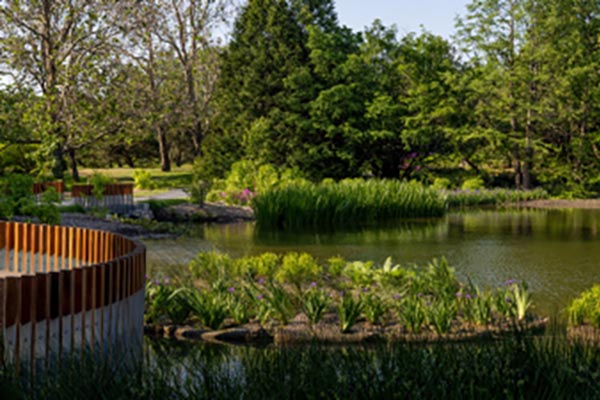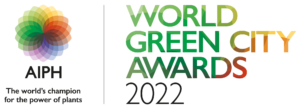Addressing the urban challenge
Breadth of the issue – How are the problem(s) that are being tackled by your initiative affecting citizens/local businesses or a significant component of the local wildlife?
Cities worldwide are facing environmental challenges and the use of plants to solve these issues is an innovative and sustainable solution. The Phytotechnology Stations were designed as an exemplar suite of solutions to some of the Montréal Botanical problems that are directly transferable to the City of Montréal, and its citizens. Plant-based solutions are low input for the organization implementing them but provide high benefits for the citizens. The increase in vegetation cover generates exosystemic service, provides habitat for the wildlife, reduces heat islands, captures water runoffs, and captures atmospheric carbon. The solutions displayed are the same facing by cities everywhere, as well as companies and citizens. As such, stimulating the deployment of phytotechnology’s stimulates the creations of green, plant-based, expertise and start-ups.
Depth of the issue – How seriously are the problems being tackled by your initiative impacting the life of the citizens/businesses/wildlife concerned?
Soil contamination, wastewaters, invasive plant species, heat islands, etc. are all very serious problems that affect the quality of life and health of urban citizens worldwide. Moreover, economic, and social impacts are significant burdens for both public and private organizations. Phytotechnology’s offers innovative, green, and sustainable solutions with obvious benefits for the citizens and businesses of the City of Montréal.
The power of plants and natural ecosystems to deliver benefits
How is the initiative shaped by scientific evidence of the potential for plants and natural ecosystems to deliver benefits?
The Phytotechnology Stations project was carried out in close collaboration with the research department of the Montréal Botanical Garden and involved scientists recognized worldwide for their expertise in this field. The designs of these Stations were based on their knowledge of plant biology. The principle of phytotechnology’s is based on the exploitation of the physiological characteristics of plants to take the best advantage of them, whether to extract contaminants from the soil, stabilize soils and reduce erosion, or exploit their transpiration capacity to treat runoff.
How has the city exploited the potential of plants and associated ecosystems to deliver more than one benefit?
All the facilities comprising the Phytotechnology Stations exploit the potential of plants to solve an environmental problem. This is the very principle of phytotechnology’s. As a result, the use of plants indirectly generates a set of ecological benefits. For example, the establishment of a Soil Decontamination Station aims primarily to use plants to rehabilitate polluted soils. However, the use of plants also allows the creation of green spaces that contribute to absorbing greenhouse gases, create oases of coolness, increase biodiversity and improve the landscape.
Innovative and Collaborative Solution
How does the initiative show evidence of feasibility, including on-going financial and logistical support?
The City of Montréal has committed the necessary funds in its long-term planning strategy. The Montréal Botanical Garden has created a full-time scientist position to oversee the effectiveness of the project and its implementation. A landscape architect, specialized horticulturists and gardeners support this position.
In what ways is the initiative innovative?
The establishment of Phytotechnology Stations at the Botanical Garden enables both solving environmental problems and providing elements of education and demonstration. Each station has educational elements that explain the role and function of plants with the help of display boards. This also allows us to make visitors (800,000 per year) aware of the importance of these green technologies as a new approach and encourage their use in various situations, including domestic, municipal and industrial. To our knowledge, no other botanical garden in the world has built such infrastructures and exploited their multiple functions.
How is the initiative supported by collaborative working across disciplines and sectors?
The design work for the Phytotechnology Stations involved people from a variety of disciplines. Plant biologists specializing in phytotechnology’s from the Botanical Garden and the Université de Montréal, engineers, and horticulturists who advised on the right plant choices. Financial partners from the industrial sector sponsored the construction of some of the Stations. It is interesting to note that the ideas presented through these Phytotechnology Stations have been taken up and applied in certain areas of the City of Montréal to address concrete problems. The phytoremediation project on four hectares of brownfields in the east end of the City of Montréal is probably the best example.
How does the initiative demonstrate evidence of community support?
The establishment of the first phytotechnology stations was made possible thanks to the economic support of Québec companies which invested several hundred thousand dollars through the Space for Life Foundation.
Today, the entire Québec community is benefiting from this initiative and several unexpected initiatives are being developed: if the stations are the place of research of several graduate students, they are as well the central place of animation of several day camps for the children of Montréal. The Québec society of phytotechnology also uses the course as support of demonstration for its activities of diffusion.
In an even more original way, a true partnership with the National Film Board of Canada has been established. It will allow us to retrace the evolution of the decontamination station, its renaturalization and the phytotechnology’s that are put forward over the years.
Implementation, Impact and Replicability
How does the initiative demonstrate evidence of a track record of success against pursued objectives?
The initiative was conceived based on years of research by the garden’s team of scientists, world leaders in the field of plant-based solutions. The team has conducted several projects for soil decontamination, constructed wetlands and revegetalization initiatives across the Québec province and the City of Montréal. It is worth noting that the “Parc-Plage of the parc Jean-Drapeau”, a safe and clean swimming area in the middle of the St-Lawrence river, is a long-term success of a plant-based project. The water quality is significantly improved by a plant-based system installed by city employees and scientists. In the east of the island, a particularly industrialized sector, a 4-hectares-pilot-scale phytoremediation experiment is set up by the scientific team of the Curator of the Botanical Garden. It constitutes a real green lung for the neighbourhood which the population already appropriates. Implanted everywhere in the Botanical Garden, the stations of the pathway to phytotechnology’s are a unique demonstration of our knowledge and our know-how.
How has the initiative had a ripple effect beyond the scope of the initiative itself, thereby demonstrating a change in the city’s and/or its partners’ way of working with plants?
With the positive repercussions of the implementation of the project in 2 areas of the city, the Urban Micro The idea is precisely to demonstrate the best use of plants as an innovative and effective solution to environmental problems. Each of the Stations set up demonstrates the effectiveness of plant-based solutions for a particular application (water treatment, soil decontamination, invasive plant species, etc.).
The information provided for each of these Stations will make it easier for managers to consider and implement similar green infrastructures elsewhere in the city. The most recent example of feasibility is the implementation by a team of experts of the Botanical Garden of a large phytoremediation project for the treatment of contaminated soils in the east end of the City of Montréal – the largest project of its kind in Canada.
How have other cities expressed interest in the initiative, or what potential does it have to interest other cities and be customised to their own circumstances?
Cities around the world are facing environmental challenges and the use of plants to solve these issues is an innovative and sustainable solution. The initiative was conceived as an exemplary set of solutions to some of the problems of the Montréal botanical garden. These solutions are directly transferable to the entire City of Montréal and its citizens. The concept can also be shared among most cities in the world.
Plant-based solutions are inexpensive for the organization implementing them but offer great benefits to citizens. Increased vegetation cover generates ecosystemic services, provides habitat for wildlife, reduces heat islands, captures stormwater runoffs, and captures atmospheric carbon. The solutions to Montréal’s problems presented by the stations are ones that can be implemented everywhere by cities, as well as companies and citizens. As such, it stimulates scientific community interaction for the deployment of phytotechnology’s, the creation of green, plant-based expertise and start-ups.
For example, the team of the Montréal Botanical Garden has developed a partnership with the Shanghai Botanical Garden to co-create solutions adapted to China. The initiative was also the subject of a presentation which was given in 2018 in the Basque Country, this was a source of inspiration for the City of Vitoria-Gasteiz which relies on similar approaches for the development of certain neighbourhoods.
Sustainability and Resilience
What efforts have been made to reduce the carbon footprint of the initiative?
Phytotechnology’s are all good alternatives to conventional engineering processes. The use of plants thus has positive effects on the reduction of greenhouse gases and the use of products of fossil origin. Whenever plants are used in a green infrastructure, they contribute through their photosynthesis, to absorb CO2 which has a direct effect on the carbon footprint.
How have the anticipated impacts of climate change been considered?
Each station of the pathway is followed by the scientific team of the Botanical Garden and the subject of study of several graduate students at the Institute de biologie végétale (plant biology research centre) at the University of Montréal. A special effort is made to choose resilient, indigenous and non-invasive plants, the selection is based on long-term climate forecasts. A follow-up of the establishment and the state of health of the plant communities is carried out. It is moreover for part of a long-term collaborative project with the National Film Board of Canada.
What processes does the initiative include for it to be considerate in its use of soils and other natural resources?
Once again, the use of Phyto technological approaches is precisely implemented to reduce the use of resources. Thus, the constructed wetlands set up in the Botanical Garden’s historic water garden filter the water and keep everything in a closed loop. This is in contrast to the situation that prevailed when the water was coming from the aqueduct, which was permanently operating in an open system with significant water losses every day. The Phytoremediation Station is a unique landscape setup. It allows the in-situ treatment of polluted soils that would otherwise be sent to specialized landfills, involving the transport and burial of large quantities of soil.
Monitoring, Maintenance, and Management
How has the initiative been designed and implemented so that long-term needs for management and maintenance are reduced and can be met?
This is one of the main principles underlying the implementation of the initiative. The use of vegetation to solve environmental issues relies on the fact that the plants will grow and become increasingly effective in accomplishing their task. The effectiveness of the two constructed wetlands in the aquatic garden of the Botanical Garden described above will improve from year to year through the development of the plant roots’ and their microbe communities; the phytoremediation potential of the revegetated wasteland will also be effective in several years; as will be the invasive plant management potential of a third station when the desired ecosystem will be fully established.
What protocols are in place to facilitate monitoring of results?
Each of the Stations has been designed by a team of horticulturists, gardeners, scientists, researchers, landscape engineers, etc. to ensure its effectiveness. Samples are being collected and analysed by the team of scientists at the Botanical Garden. The performance of the green infrastructures is accurately measured. For instance, in the constructed wetlands, water samples are being analysed before and after the wetland to measure organic matter, nitrates, phosphates, etc. to ensure that the water filtered by the plants meets environmental guidelines; soil pollution, plant contamination are also meticulously monitored on phytoremediation station; we also take care to follow species establishment whether they have been planted or whether they appear spontaneously.
How has the initiative been enhanced in response to monitoring of results?
All the stations are monitored to properly document the efficiency of the green infrastructure exploited but also to improve the process specific to each of the phytotechnology’s used. This is done by measuring plant growth and productivity and certain physiological parameters, and by monitoring physio-chemical changes in water or soil and finally by sampling soils and/or water to assess variations in microbial communities. The Stations are small living laboratories that allow graduate students to carry out master’s or doctoral projects under the supervision of Botanical Garden researchers.
According to the responses recorded, adjustments are made, such as modifications to the plant species used, soil amendments, changes in flow rates, etc.

